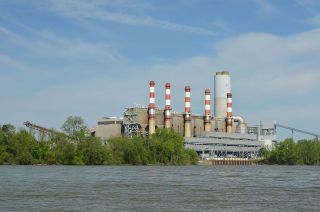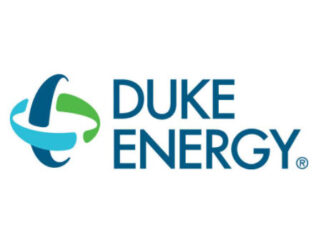
Charlotte-based NASCAR, like so many of its Fortune 500 advertisers, has lofty goals to reduce its carbon footprint and invest in renewable energy.
But just as stock-car racing has long held prominence in the Southeast, so too have electric utility monopolies. And unlike in neighboring Virginia, which has its own share of speedways, large customers in North Carolina can’t buy renewable energy in a competitive wholesale market.
That’s why the Clean Energy Buyers Association — whose members include NASCAR, Lowe’s, Walmart, and dozens of other major employers in the state — is wading into the debate over Duke Energy’s long-term plan for zeroing out carbon emissions by midcentury.
“In the absence of a competitive wholesale market, it’s where you can get the biggest bang for your buck,” said Katie Southworth, a deputy director of market and policy innovation for the association. “It will determine whether or not over 100 customers that are located in Duke’s territory can buy clean energy.”
Even as a right-wing backlash against climate-conscious investing and so-called “woke” companies ripples across the country, the economic realities of renewable energy remain undeniable in corporate boardrooms. Volatile fossil fuel prices and the costs of remediating toxic byproducts like coal ash make ever-cheaper renewables more attractive, Southworth says.
“Companies that are making billion-dollar investments are forecasting the cost of the asset over its lifetime, and they’re choosing to procure competitive, clean energy because of economic considerations,” Southworth said. “It is least-cost, and it just so happens to also be clean.”
Combined with pressure from customers, that has pushed hundreds of companies to set and pursue climate targets often more ambitious than those of their servicing utilities. The association overall aims for a 90% carbon-free electric grid nationwide by 2030; Duke’s goal is to zero out emissions by 2050.
As the number of corporations dedicated to speeding up the clean energy transition grows, so too does their imperative to prove that they’re truly decarbonizing the grid — not just taking credit for wind and solar farms already up and running.
The association claims its members have procured 71 GW of carbon-free energy since 2014 through power purchase agreements, direct ownership, and other means. The figure accounts for roughly a third of all U.S. clean energy capacity today, according to data from the Energy Information Administration.
But the vast bulk of these procurements have been outside the Southeast, Southworth says, for a simple reason: the region is blanketed with regulated monopolies that disallow many voluntary purchase arrangements.
Regulators approved Duke’s 2022 Carbon Plan largely without edits, despite scores of critics who said it low-balled solar, energy efficiency and wind while relying on as-yet commercially unproven technologies like small modular nuclear reactors and hydrogen to meet its midcentury climate targets.
In its draft 2024 plan, Duke presents only one pathway to cut emissions 70% by 2030. The utility’s preferred route is to meet the 70% target by 2035, leaning again on nuclear and gas.
“We’re generally disappointed at the lack of ambition that we’re seeing from Duke and what they’ve proposed,” Southworth said. “I think there are some good reasons for the commission to question many of the assumptions that Duke has made around natural gas fuel cost.”
Plus, even if Duke reached the 70% target by the end of the decade, Southworth’s organization has a 90% goal by that time. So, the group also hopes the Carbon Plan process will help dissolve barriers to members’ investment in clean energy and, at the very least, build an argument for increased market competition.
“We’re a state that doesn’t provide America’s largest employers an opportunity to buy the kind of energy they want,” said Chris Carmody, executive director of the Carolinas Clean Energy Business Association, a consortium of renewable energy producers. But, he said, “I think there’s several opportunities within the Carbon Plan for more competition.”
One concerns a cap on the amount of solar Duke can connect to its grid each year. In its first Carbon Plan the company proposed, and regulators accepted, adding about 1,000 MW of solar per year — a pace critics said was far too slow. In this draft, the company suggests a minimum of 1,350 MW.
This interconnection limit doesn’t just impact how much solar Duke adds to the grid for its own generation portfolio. It also restricts the size and number of solar farms that companies can build and access through pass-through arrangements like Duke’s Green Source Advantage program.
“This is one huge problem,” said David Rogers, deputy director for the Sierra Club’s Beyond Coal campaign. “If Duke makes a deal with Google or the Department of Defense to build a bunch of solar, that just comes out of the 1,350 [MW cap].”
Unlike some other barriers to clean energy for large customers, there’s no other docket so far in which to contest the annual cap. “This artificial limitation that Duke has placed on solar interconnection,” said Carmody, “that’s a specific Carbon Plan feature.”
The Carbon Plan process also offers the Clean Energy Buyers Association the chance to push for more competition in the Carolinas, which it and other experts believe will result in more clean energy and lower costs.
Though the 2021 law requiring Duke to decarbonize requires the utility to own 55% of new solar and 100% of other renewables added to the grid, experts say third parties could still vie to build renewables in a competitive process, then transfer ownership to the company.
Another popular idea among many clean energy experts: a wholesale regional marketplace that would allow large customers to buy wind, solar, and other energy sources directly at competitive prices.
A regional transmission organization could save the Southeast hundreds of billions of dollars and cut emissions 37%, according to a 2020 study by Vibrant Clean Energy and Energy Innovation. A Brattle Group analysis commissioned by the South Carolina legislature concluded the state alone could save $360 million a year in such a wholesale market.
“One thing the commission should and can do is promote competition in procurement and require Duke to model expanded market options,” said Southworth.
Related is the question of Duke’s reserve margin. A stable of power plants that can ramp up to meet peak demand, the most recent reserve margin was targeted at 17%. The company now proposes hiking it to 22%.
Rather than build more gas plants that may fail in extremely cold temperatures — as they did nearly a year ago during Winter Storm Elliott — Southworth says Duke should consider tapping power reserves from other utilities in the region. That, too, would lower costs and make more room for clean energy.
“They ought to be working with their neighbors to address these reliability issues versus trying to fix the world themselves,” Southworth said of Duke. “They should evaluate reserve sharing. Sharing is caring.”
Still, while evaluation and study are possible, few observers believe regulators would direct Duke to join a wholesale regional market without explicit legislative direction. Some said the ultimate impact of the Clean Energy Buyers Association’s involvement in the Carbon Plan might be to achieve just that.
“These are certainly the companies that could get something done in the legislature,” said Steve Kalland, executive director of the North Carolina Clean Energy Technology Center.
And while Charlotte-based NASCAR and Mooresville-based Lowe’s aren’t likely to exit North Carolina altogether, other companies could, or choose to invest heavily elsewhere.
“They’re setting goals, and they need to meet them,” Southworth said last month on a conference panel hosted by the North Carolina Sustainable Energy Association. “They’ll leave if they can’t get the clean energy they need. They’ll go to Oklahoma.”
But on that same panel, Duke’s deputy general counsel, Jack Jirak, pushed back.
“We certainly respect and value very much the perspective of customers who desire clean energy. That’s a high priority for us,” Jirak said. “North Carolina for two years in a row was the number one state for economic development. I think that shows there’s something we’re doing right.”



